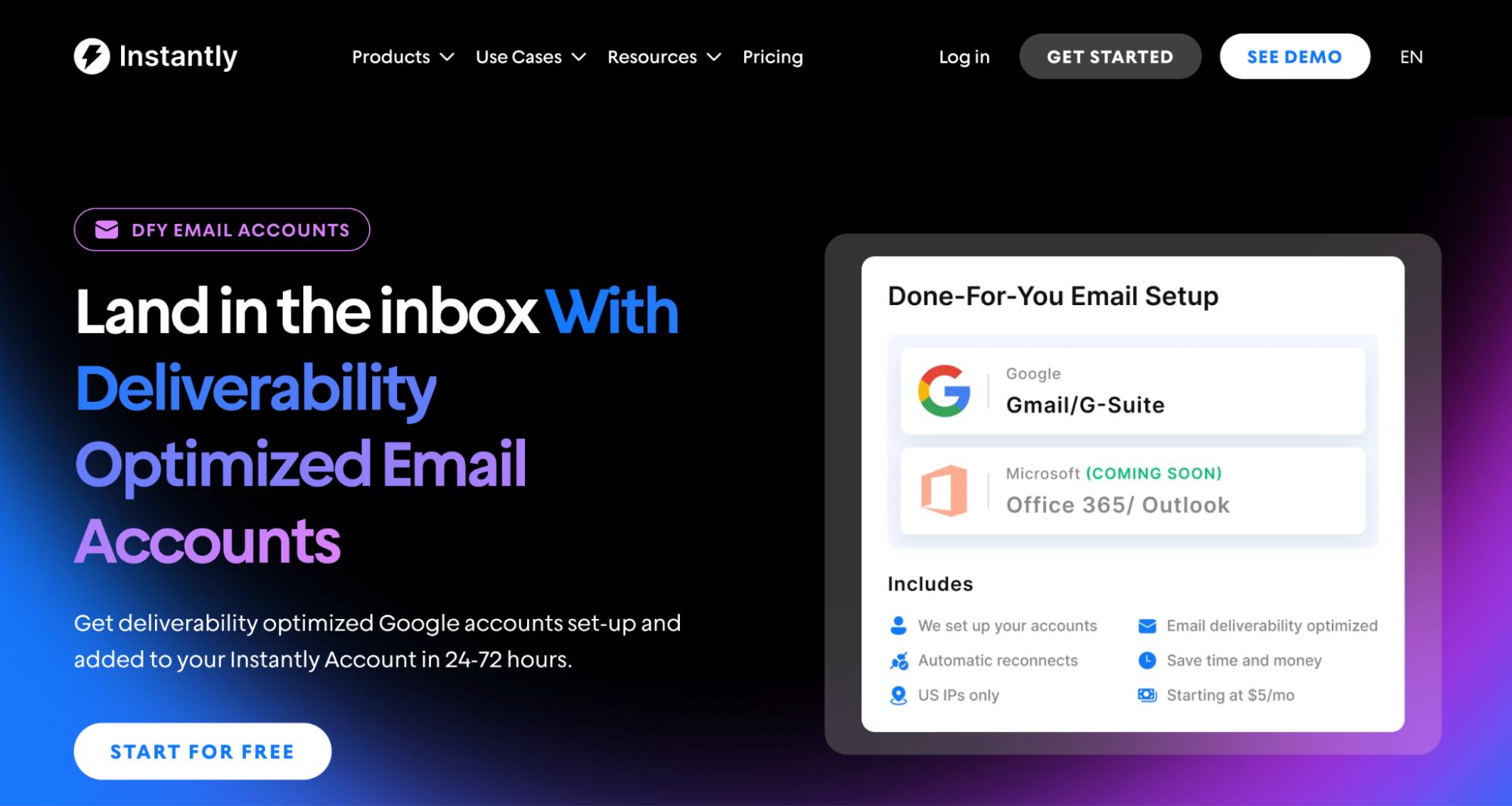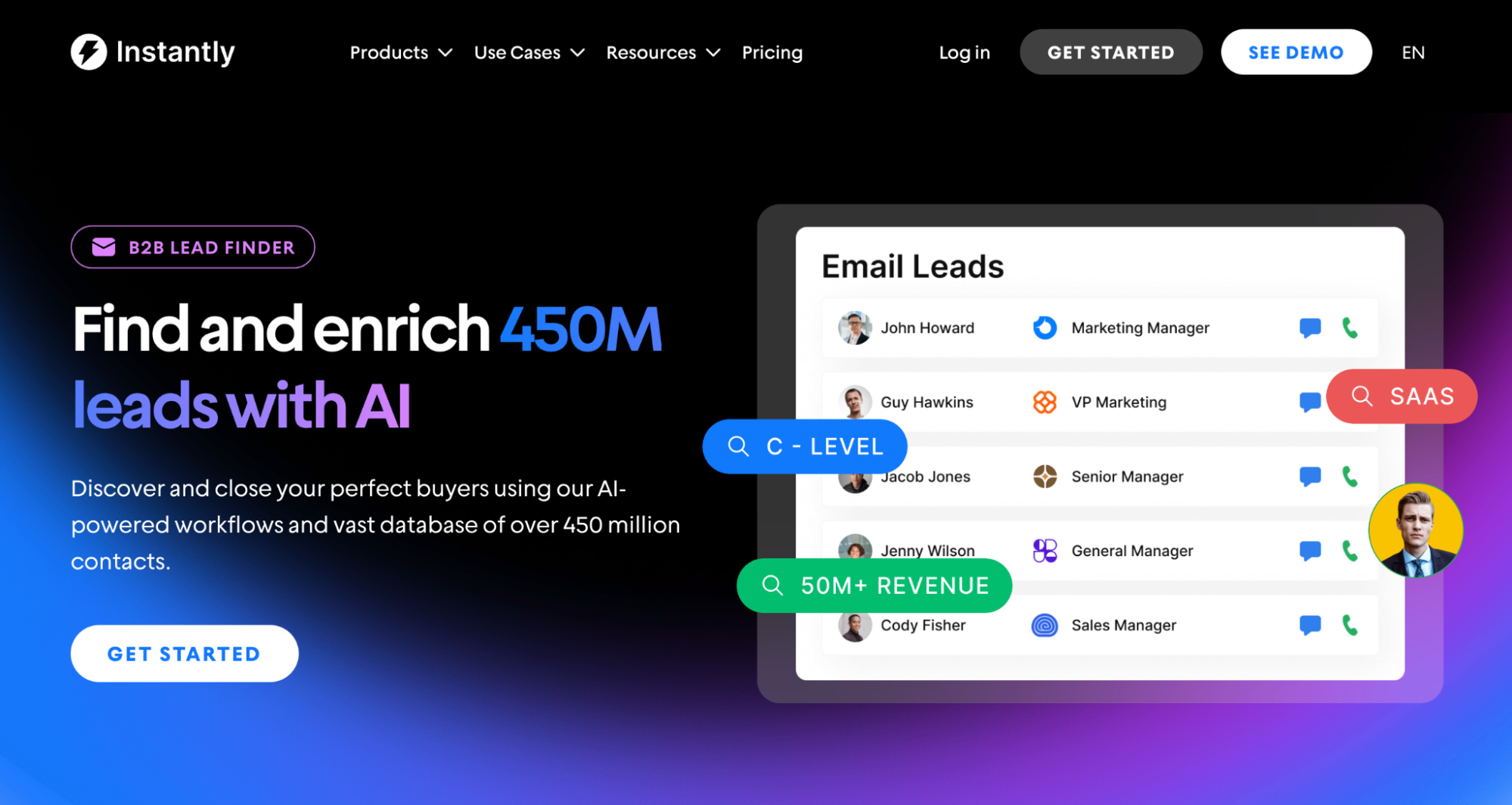LinkedIn InMail and cold email marketing are arguably the best outreach channels for getting more B2B clients. Both give direct access to your prospects’ inboxes. The most significant difference between them is scalability, control, and deliverability.
So, which one should you focus on? It all depends on your specific campaign goals. Below, we briefly unpack the key differences between them to help inform your decision.
The Main Differences Between Cold Email and InMail
InMail and email are forms of cold outreach. Both offer a proactive approach to prospecting, helping businesses fill pipelines without waiting for warm leads. Like email, InMail requires a subject line, a body, and a CTA. But the similarities often stop there. Here are the key differences:
Cold Email Is Infinitely Scalable, InMail Is Not
With the correct cold email infrastructure, you can scale outreach infinitely. From a more grounded perspective of a small agency, you can send up to 10,000 emails monthly when testing the waters. You scale by adding more leads and domains.
With InMail, you’re stuck with LinkedIn’s sending restrictions—even with their highest-tier business plan, Sales Navigator Core, the limit is 50 per month. However, the credits you spend refresh when prospects reply. Studies suggest that InMails get more replies than emails.
InMail Has Higher Reply Rates Vs Cold Emails
InMail can have 18% to 25% reply rates; cold email reply rates are 1% to 8.5% on average. However, the numbers can skew depending on the industry and how well you personalize your outreach. Despite the lower reply rates, emails make up for it in volume.
At 50 InMails per month, you can get 9 to 12 replies if you’re hitting the average. With a cold outreach campaign sending 5,000 emails monthly, you’re looking at 50 replies on the low and 425 on the high end. So while InMail is great for targeted outreach, email wins with scalability.
LinkedIn Messages Feel More Trustworthy than Cold Emails.
LinkedIn set sending limits for InMail to avoid spam and ensure outreach stays professional, intentional, and relevant. While you can achieve the same with cold email, LinkedIn carries more weight as a professional platform, making messages feel more credible and trustworthy.
That’s why LinkedIn has an average of 57.7% open rates according to studies. But there are ways to improve the trustworthiness and authenticity of your emails significantly. For example, you can implement BIMI to add a logo to your sending accounts to help you stand out.
InMail is Easier to Set Up Than Cold Email Outreach
With InMail, you just have to find a prospect, write a personalized, relevant, and valuable InMail, and you’re good to go. Meanwhile, it takes a lot for cold emails to work. You need to know how to set up a proper cold email infrastructure for cold email.
The right setup ensures high deliverability and scalability without burning too many resources. This includes setting up DMARC, DKIM, SPF, Forwarding, and Warmups. This would be a big issue for agencies and businesses that aren’t tech-savvy.

To help you get up and running in no time, Instantly has a Done-For-You (DFY) email setup. You can buy domains (even pre-warmed ones) and have all technical setups done for you within 24 to 72 hours of purchasing a domain. After that, you only need to add leads to a campaign.
Prospecting for Cold Email can be as Good as (Or Better Than) LinkedIn
LinkedIn Sales Navigator is one of the tools that’s always associated with prospecting and for good reason. If you’re prospecting on LinkedIn, you don’t have to get third-party tools to find leads who fit your ICP if you use tools like Sales Nav’s advanced filters.

Instantly's B2B Lead Finder offers similar or even better results since it doesn’t rely solely on LinkedIn data to find leads. You get even more advanced filters like company news, tech stacks, and funding updates. Plus, every lead is pre-validated and ready to use in any campaign.
Cold Email Gives You More Control Over Multichannel Sequences
Both cold email and LinkedIn can be part of a multichannel strategy, but cold email gives you more control over how those sequences are built. With cold email, you decide when to trigger LinkedIn profile views, connection requests, or follow-up messages across different platforms. You're not limited to one ecosystem or sending method.
In contrast, InMail lives strictly within LinkedIn’s native messaging system. You can’t automate follow-ups the same way or fully integrate them into custom outreach flows. That makes cold email a better backbone for multichannel cadences, especially when paired with tools that let you layer in LinkedIn, ads, and SMS on your terms.
InMail is Tied to Personal Profiles, Cold Email is Not
InMail messages are sent from your LinkedIn profile, putting your professional identity back in the center. This is great for building trust, but also means your outreach volume is tied to your account’s reputation.
With cold email, you can scale using multiple domains, inboxes, and sender identities without risking your primary business email or personal reputation. This gives you more freedom to test, iterate, and optimize without burning bridges.
InMail Vs Cold Email: Which Strategy Should You Focus On?
It depends on your goals. LinkedIn InMail is great for targeted outreach. LinkedIn is a solid platform for going after high-value prospects, building relationships, or leveraging mutual connections to increase credibility.
Cold email, on the other hand, is built for scale. It gives you more control over your sending infrastructure, automates follow-ups, and allows you to run multichannel sequences better. You can test copy, subject lines, and CTAs at a much larger volume, helping you optimize faster.
Key Takeaways
The debate between InMail and cold email comes down to what works best for your business. The only way to know for sure is to test both. A/B test your outreach, track the results, and double down on what gets replies. But cold email is hard to beat if you’re looking for speed, control, and scalability.
It does take work, but that’s why we built Instantly. From domain setup to automation and optimization, Instantly.ai handles the heavy lifting so you can focus on what matters: getting replies and driving ROI. Try Instantly for free today and start scaling.




